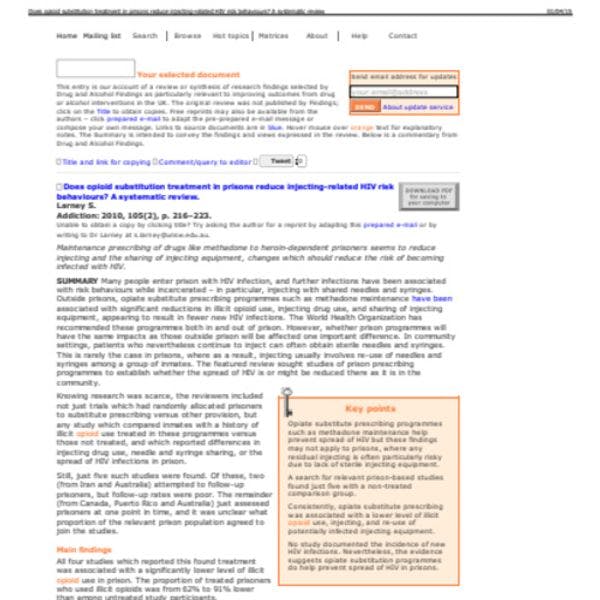Does opioid substitution treatment in prisons reduce injecting-related HIV risk behaviours?
Many people enter prison with HIV infection, and further infections have been associated with risk behaviours while incarcerated – in particular, injecting with shared needles and syringes. Outside prisons, opiate substitute prescribing programmes such as methadone maintenance have been associated with significant reductions in illicit opioid use, injecting drug use, and sharing of injecting equipment, appearing to result in fewer new HIV infections.
The World Health Organization has recommended these programmes both in and out of prison. However, whether prison programmes will have the same impacts as those outside prison will be affected one important difference. In community settings, patients who nevertheless continue to inject can often obtain sterile needles and syringes. This is rarely the case in prisons, where as a result, injecting usually involves re-use of needles and syringes among a group of inmates.
The featured review sought studies of prison prescribing programmes to establish whether the spread of HIV is or might be reduced there as it is in the community.
Keep up-to-date with drug policy developments by subscribing to the IDPC Monthly Alert.
Downloads
Topics
Regions
Related Profiles
- Sarah Larney
